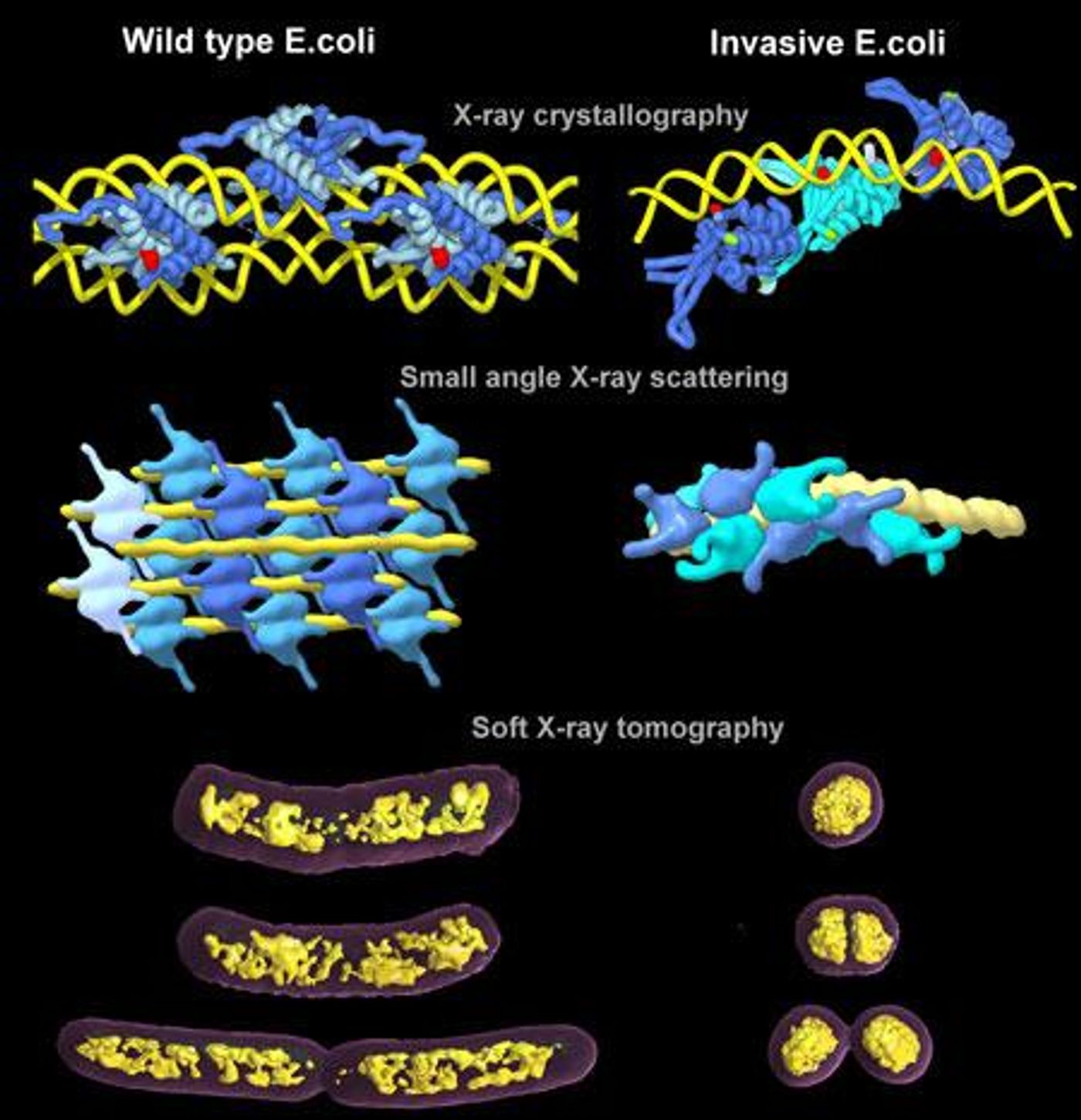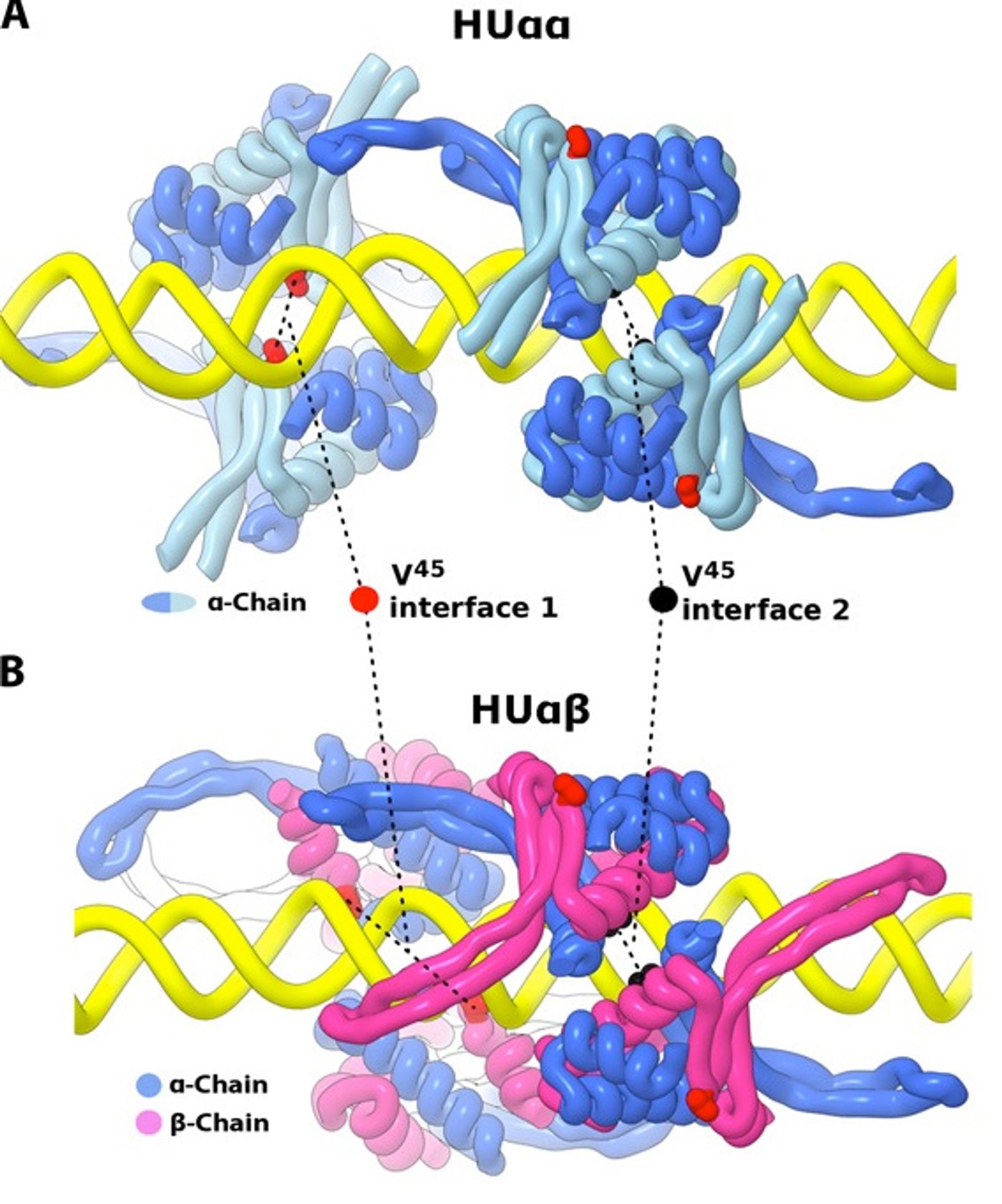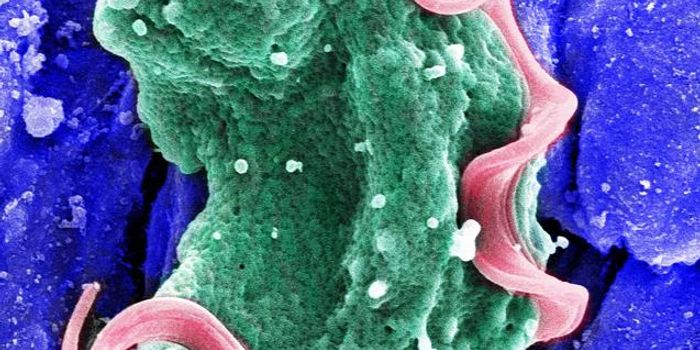Scientists at the Department of Energy's Lawrence Berkeley National Laboratory have elucidated the process that activates the pathogenic genes of a bacterium.
Publishing in Science Adavances, the researchers utilized the power of X-ray imaging to reveal that when DNA begins to twist into a so-called supercoiled formation, genes that make a microbe pathogenic get triggered.
DNA has to be compactly wound so it can fit into small cellular spaces. In eukaryotes, histone proteins organize the DNA into the nucleus. In single-celled prokaryotes, histone-like molecules called HU proteins package the DNA, and it localizes to the nucleoid, a loosely defined area without a membrane.
"It has been known that DNA supercoiling leads to pathogenicity in bacteria, but exactly how the bacterial chromosome is condensed, organized, and ultimately segregated has been a puzzle for over half a century," explained the lead author of the study, Michal Hammel, a research scientist at Berkeley Lab's Molecular Biophysics and Integrated Bioimaging Division. "What we did for the first time was to visualize in E. coli how this packing is done, and we also discovered that the way HU proteins pack the chromosomes can trigger gene expression. That is new."
Under the direction of senior scientist John Tainer, the researchers merged the powers of X-ray crystallography with small angle X-ray scattering (SAXS). The crystallography can show details of how the HU proteins interact with the bacterial DNA at the atomic level. SAXS is able to reveal the way in which HU proteins influence and assemble long pieces of DNA in a solution.
To get a look at this packaging in vivo, another collaborator, Berkeley Lab faculty scientist Carolyn Larabell, the director of the National Center for X-ray Tomography (NCXT), was brought in to help investigate.
"We needed the interaction of these different techniques to get the overall picture of how the HU interactions with DNA were affecting the bacteria," commented Larabell. "With X-ray tomography, we're able to see the natural contrast in organic material in as close to a living state as possible, and we can provide quantitative comparisons of how compacted the chromosomes were in pathogenic and normal strains of E. coli."
Larabell was able to determine that in pathogenic E. coli, genetic material is so densely packed that it takes up less than half the volume than it does in non-pathogenic E.coli.
This new study has shown that altering the assembly of HU proteins is enough to cause changes in the packaging of DNA at various stages of bacterial growth, independently of the enzyme topoisomerase. Prior to this work, it was thought that DNA coiling in bacteria was driven primarily by changes in that enzyme.
"What is notable about HU proteins as a trigger for gene expression is that it's quick," said Hammel. "This makes sense as a survival mechanism for bacteria, which need to adapt quickly to different environments."
So it remains to be seen that if pathogenicity can be switched on with supercoiling, might it also be switched off?
"We certainly expect to answer that question in future studies," Hammel told Berkeley Lab News Center. "These HU interactions could be an attractive target for drugs that control pathogenesis, not only of bacteria, but of other microbes with comparable genetic structures."
Sources:
AAAS/Eurekalert! via
Berkeley Lab News Center,
Science Advances










